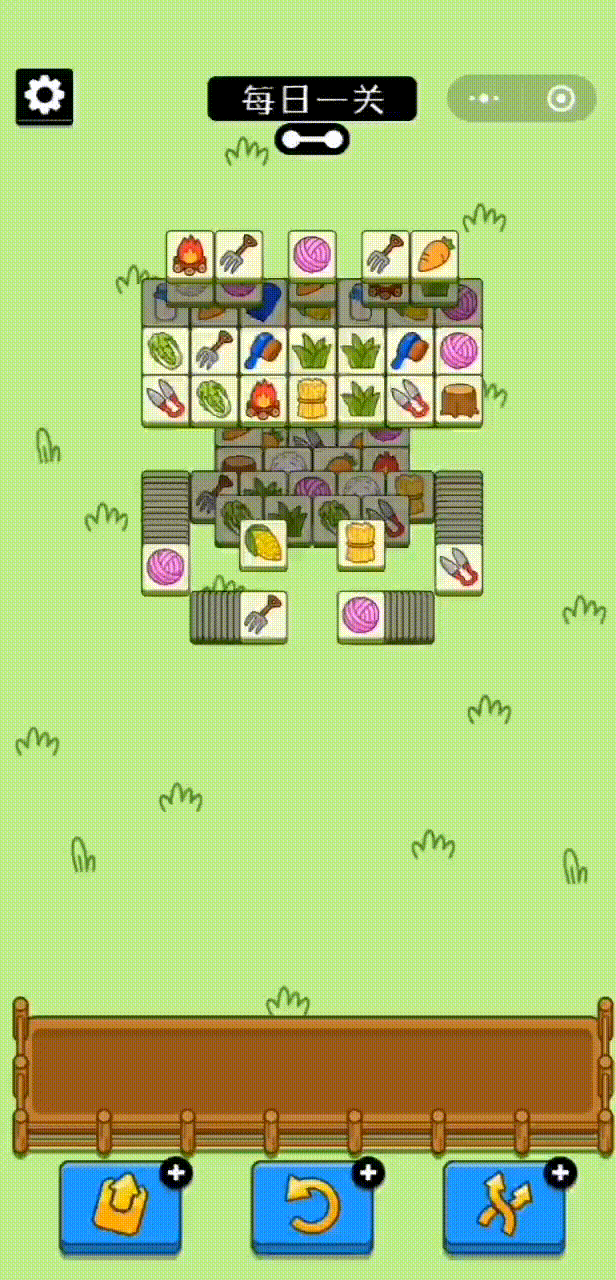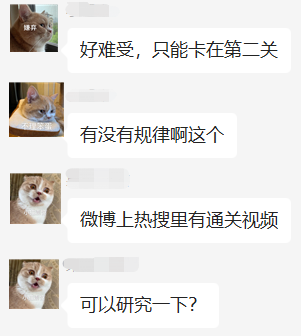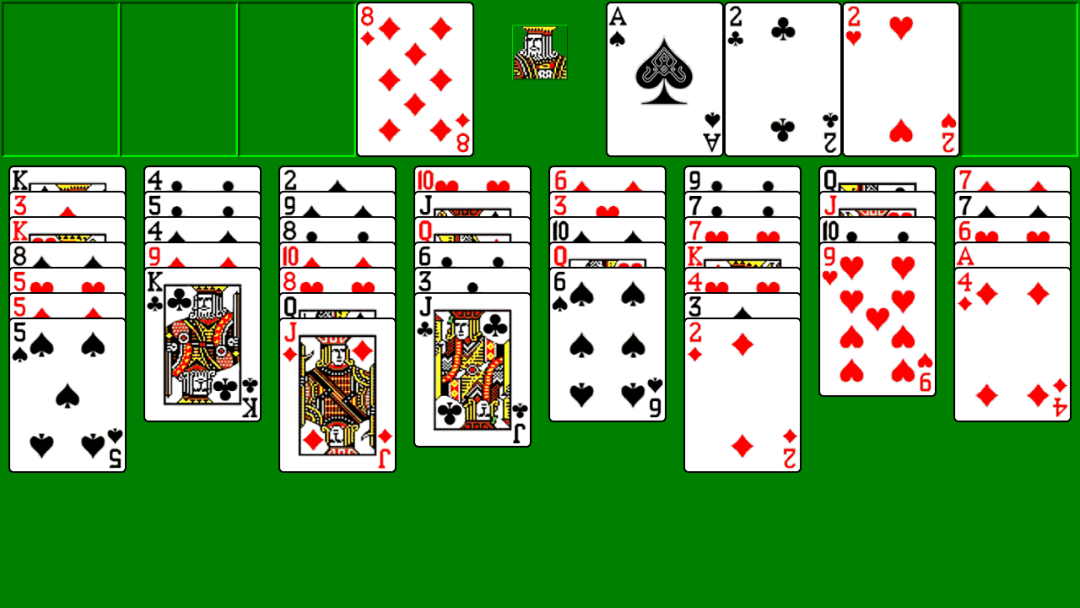Why is it so difficult to "Sheep"!Did it make me lose intentionally?
Author:Shell net Time:2022.09.14
Recently, a small game called "A Sheep" on Weibo searched on Weibo.

Simply put, this is a stacking elimination game with mahjong elimination as a gameplay. There are 7 vacancy below. After taking 3 squares with the same pattern above, it can be eliminated. After taking all the squares, it is victorious, and the 7 vacant positions are filled and failed.

In various WeChat groups, everyone can also see a lot of links sent out for the props, followed by a series of discussions: Can you win? Is it good to win? How to win?

From the perspective of game design, I think these problems can be seen like this:
"A Sheep", is it "difficult"?
If the customs clearance rate is used as an indicator of "difficulty", this game is undoubtedly very difficult. After all, nearly 94%of the voting of Sina Games does not clear the customs. This is also a sample of a game player. If people with lack of experience in the game also come to participate in the voting, the customs clearance rate will only be lower.

I also tried several games. Anyway, it was difficult to check without looking at the advertisement, but calm down and think about it, where is the point of sadness?
Is the problem that the problem is too high, do you need brain burning? It doesn't seem to be, as long as you play a few more games, it is easy to summarize "more stacking signs, because the stacking area is completely unknown", "According to the visible dark card planning flip areas below", "Can't just get the card just to eliminate the cards, just take the card to win the card. The card also needs to increase the rules of winning rate for "opening the vision '", "trying to get the most observed areas", and so on.
Yes, these strategies are just confrontation with the bottom -level design of "We don't know the placement of all cards". Borrowing the concept of game theory, this is a game of incomplete information.
I remember that the readers who were connected to the dragon could compare. In the empty dragon, all cards were initially made, so in theory, as long as you think about all steps in your mind first, you can clear the level. But what about "Sheep"? Before the player opens a card, I do n’t know what cards are hidden below, and even if there are cards below, I do n’t know. Due to incomplete information, there is no way to formulate a must -win strategy.

Increasing randomness and unknown can make the game more interesting. When playing traditional puzzle games such as Huagong Dao and Jiupi Ring, players can get all the problem -solving information at the beginning, so it is easy to play with the randomness and unknown game of the landlord and Mahjong. Even if you have a strong strategy, you can't "win stability", and naturally you can continue to last.
And the second level of "Sheep's Sheep" is that there are too many information we don't know, and the fault tolerance is too small: there are only 7 grids without looking at the advertisement!
Is it designed as a problem -free problem?
There is also a saying on the Internet, saying that this game will secretly determine what the cards exposed after flipping the card, and deliberately make you unable to pass. So, is there a solution or no solution in design?

In fact, designing the game deliberately as a solution will be much simpler than the special design.
First of all, if you do not consider the slot, you need to find three same cards from the card pile and then eliminate it. To build such a solution, as long as you prepare 3 cards of 3 cards, then find a empty table, and you can place a set of cards on the plaid at your time.
In this way, the three groups in the order and the opposite order can be cleared. Constructing puzzles according to this code card, algorithm complexity will be very low.
So what if there is a slot like "Sheep with a Sheep"? There will be more solution to the market.
In the initial 7 slots, there were actually three groups that need to be left for "to be eliminated immediately", corresponding to the group we took in our hand. The remaining four are free slots. Still use the above card method, but in addition to putting the hand directly on the table, you can also choose "Put the hand in the free slot" or "take a card from the free slot to put it on the table". Two options. Inside the operation of the card, it is another set of feasible licenses.
Conversely, it is more complicated to design a fixed -unsolvable bureau. It is even more difficult to prove that a card must be traversed through all possible ways to traverse all possible ways. Moreover, under the blessing of props, this unsolved situation is likely to become solved by props.
So, what about a dynamic structure? That is to say, the card type below is not generated at the beginning, but analyzes the types of Ming cards left on the table, so that the ups and downs are not very good?
It is not impossible. The logic of more complex dynamic analysis cards is introduced, which will increase the development cost of the game. It may also introduce the bug that was not originally not available, or from the perspective of the complexity of the algorithm. It is really not necessary.
Of course, from my personal observation, I think this game really didn't consider any algorithm, it was pure random, and the card was scattered on the table. )
After all, insufficient information has made this game "difficult" enough. Occasionally, some people are lucky to clear the level, and can further increase the topic.
The developer of this game is also quite interesting
As a large number of netizens saw, "Sheep's Sheep" copied a fresh wind mobile game called 3 Tiles on the mechanism. Of course, these two games are different in the income model.

This is the 250th level of 3 Tiles

This is the second level of "A Sheep"
3 Tiles is a free game, relying on props charges and some advertising income, the number of levels is large, and the difficulty is progressive. At the beginning of the low difficulty level, it attracts users, or to cultivate user viscosity, and then rely on the level to gradually increase the difficulty to attract users to use free props. When the checkpoint is difficult, the user uses the item to form a habit, and it will be driven by the victory and defeat. There is only one level that does not seem to be difficult but cannot be passed, causing virus transmission. Of course, watching advertisements is its main source of income, but unlike other games that rely on advertising income, "Sheep with a Sheep" limits the number of times a single user reads the advertisement every day. Related props, this undoubtedly further promoted viral transmission.
And the company behind "Sheep" is also very interesting. If we look at the industry background of its production company in the past, we will find that it has been deeply cultivated in the small game category for many years. There are games with a lot of marketing logic with "A Sheep".
This model is based on mature gameplay, plus the clever level design, and put it in batches. One of them can get angry and earn.
So in fact, you don't need to ask why "A Sheep with a Sheep" is so hot, it is just that it is just the fire.
Author: antares
Edit: Emeria, Odette
- END -
Speed 350!The Zhengyu high -speed rail is connected throughout the board, and the fastest 4 hours 23 minutes from Zhengzhou to Chongqing

Jimu reporter Li Bo Peng Liu Liu LiuCorrespondent XiangfengVideo editing Zhou Xin
The Shaanxi Railway passenger flow ushered in the return of the small peak of the National Railway Xi'an Bureau to add 162 passenger trains
On September 12, on the third day of the Mid -Autumn Festival holiday, the Shaanxi Railway ushered in the return passenger flow. The National Railway Xi'an Bureau expects to send 170,000 passengers to...